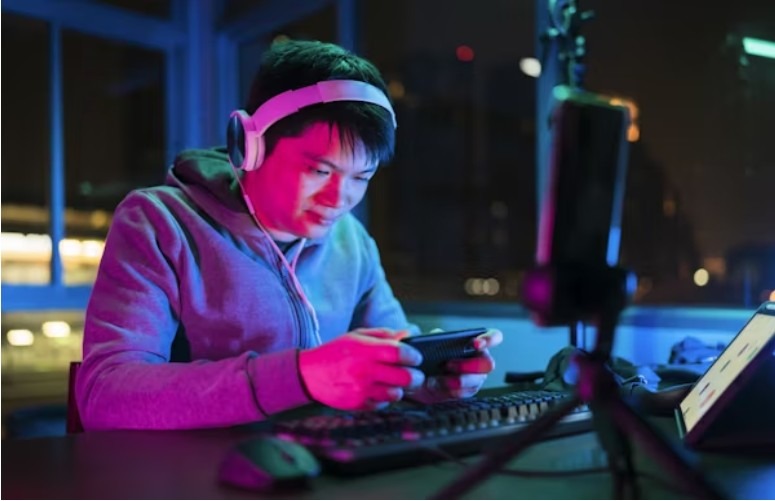Action-packed online games have grown into a true test of strategy, reflexes, and imagination. Combat mechanics, once simple and straightforward, have evolved into complex systems that bring players closer to realistic, thrilling, and smooth experiences.
From quick button mashing to tactical timing and fluid movements, the transformation of combat in modern online games shows just how far interactive gameplay has advanced.
The Shift from Simplicity to Depth
Early online combat was mostly about quick reactions. Players had limited moves, simple animations, and predictable outcomes. Today, things have changed dramatically. Combat now feels more natural, as developers focus on timing, rhythm, and precision to make every hit or block meaningful.
Modern combat systems bring balance between realism and fun. Players can combine speed, skill, and decision-making, making every fight feel personal and rewarding. This evolution keeps players invested and adds depth to gameplay that wasn’t possible in older games at tangandewa.
Introduction of Realistic Physics and Animations
Realistic animations play a key role in making combat exciting. Motion capture technology and advanced physics engines allow movements to feel fluid and lifelike. Every swing, dodge, or parry responds to the player’s input naturally, creating a strong sense of connection between the player and their character.
As a result, combat systems now react dynamically. Instead of pre-set attack patterns, players experience motion that responds to terrain, weapon type, and character position, creating battles that feel alive and unpredictable in a positive way.
Strategy Meets Skill: Tactical Combat Evolution
Today’s combat isn’t only about who clicks faster—it’s about who thinks smarter. Strategic elements have found their way into online games, making combat more thoughtful and balanced. Players can plan attacks, manage resources, and adapt to situations on the fly.
This has made teamwork and coordination more meaningful in multiplayer titles. Every role in a group fight matters, and when players work together, they can create thrilling moments that rely on both skill and collaboration at tangandewa.
The Rise of Personalized Combat Styles
Customization has become a core part of modern combat systems. Players can adjust weapons, abilities, and fighting techniques to suit their playstyle. Some prefer close combat with quick strikes, while others choose ranged tactics or defensive approaches.
This personal touch gives players ownership of their experience. It adds variety to each game and ensures no two battles ever feel the same. This growth in personalization has made online combat more inclusive and exciting for everyone.
Integration of AI in Combat Mechanics
Artificial Intelligence has brought a new layer of depth to online gaming. NPCs (non-playable characters) now think and react intelligently, analyzing player behavior and adapting their tactics. This makes every fight unique and challenging in a rewarding way.
AI also supports smoother gameplay by adjusting difficulty levels automatically, ensuring that both new and experienced players enjoy the action equally. With smarter enemies and responsive allies, the entire combat experience feels balanced and polished.
The Influence of Esports on Combat Design
Esports has had a major influence on how developers approach combat mechanics. Competitive players demand precision, fairness, and excitement, which has encouraged studios to fine-tune mechanics and balance every aspect of gameplay.
This focus has benefited all players, not just professionals. From accurate hit detection to stable frame rates, combat has become more reliable and satisfying. Esports-inspired designs have also motivated developers to continuously refine combat to meet higher performance expectations.
The Role of Technology in Shaping Modern Combat
Advancements in technology have transformed the way players experience combat. Features like haptic feedback, adaptive triggers, and faster processing speeds allow for smoother controls and more accurate reactions. Online servers are faster and more stable, ensuring every action feels instant and responsive.
With cloud gaming and cross-platform play, players from different devices can now share the same immersive experience. These improvements show how technology continues to make online combat more exciting and accessible.
Player Interaction and Community Growth
Modern online combat isn’t just about competition—it’s also about connection. Players form teams, join guilds, and participate in tournaments that promote a sense of friendship and teamwork. The thrill of shared victory and cooperative strategy creates strong communities.
Developers have encouraged this by adding modes that focus on collaboration and social interaction. This shift from individual combat to shared experiences has made online gaming more enjoyable and inclusive for players of all levels.
Conclusion
Combat mechanics in online games have evolved into something truly remarkable. From simple controls to dynamic and realistic systems, every change has improved how players experience action, strategy, and teamwork. The focus on innovation, creativity, and technology ensures that the excitement will only continue to grow.

